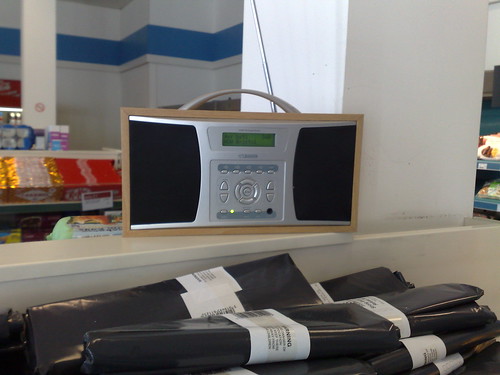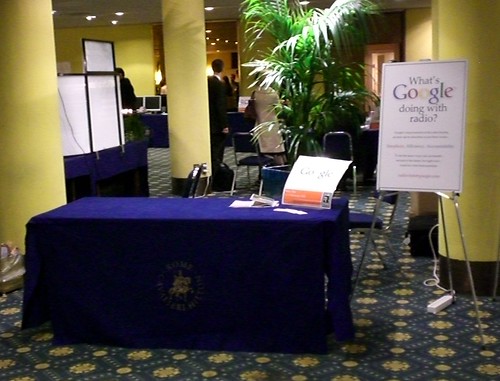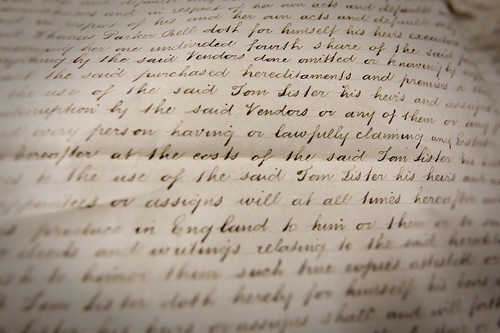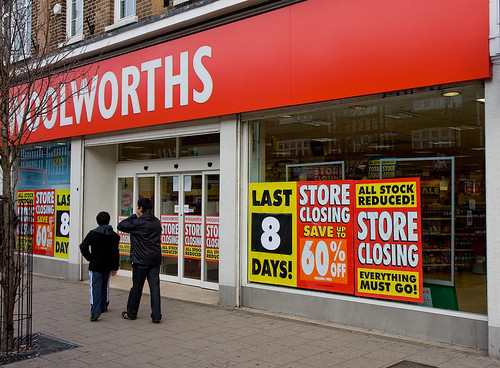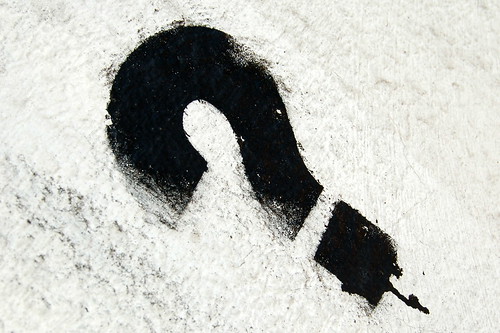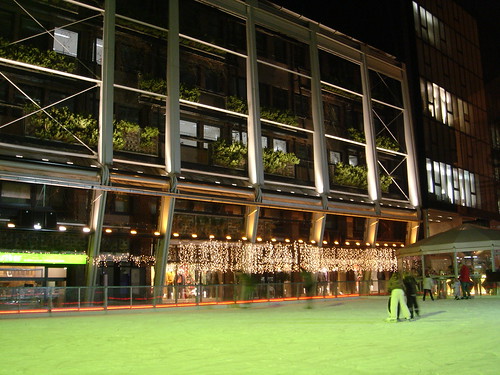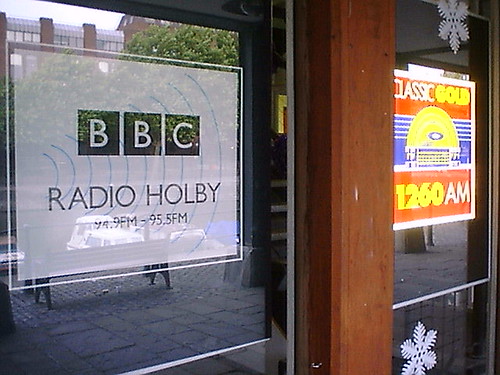
John Myers’ report “An Independent Review of the Rules Governing Local Content on Commercial Radio” was published yesterday, and it’s well worth committing time to read through in detail.
If you’re outside the UK (or even outside the UK Commercial Radio Industry), you might be wondering why a report into the regulation of local content on commercial radio should involve Digital Radio.
I will very briefly précis 95% of John’s report. Commercial radio has got into a perilous state financially, through a combination of over-farming (too many new licences, not enough associated audience/revenue growth) and increasingly burdensome costs. The currently regulatory system promulgates this situation, and without urgent change, there is a real risk of sectoral failure.
John’s remit was to consider the regulatory environment surrounding local content, but Digital Radio (and digitisation in general) is brought to the report in a number of places. (I’m not going to talk about the issues and suggestions in respect of local regulation that John raises in his report).
A key tenet of the report is that the current regulation of localness is wholly inappropriate for the media environment of 2009 and onwards. John mentions several times that it should be considered unreasonable for licensed radio operators to work under local content regulation when Internet radio does not. In my opinion, John has somewhat over-played the threat – current and future – from Internet delivered radio to support this argument. I believe the issue is that listeners are seeking choice and innovation, and that if the licensed industry can’t/won’t provide that, people will find it from new operators. In this respect, the method of delivery is largely irrelevant. Existing operators stream over the Internet, and new services can start on DAB (but see below too). It probably depends on how much choice you have to deliver to remove the incentive to buy IP-connected radios to seek out new stuff, and your estimation of the value that exists in the “long tail” of radio. In my view, radio operators have all the tools the need to reach out further down the long tail if they believe it’s profitable to do so, and have a unique advantage of doing so on both IP and into protected spectrum which will deliver universally into the fixed and mobile domains (that would be DAB then). Even with broadband penetration heading towards 80%, Internet listening is very very small, and dwarfed by DAB listening.
Whilst outside the direct remit of his report, John clearly identifies that costs and revenues are a problem for the radio industry. Growing numbers of stations have raised sectoral costs, and revenues are declining. Changing the regulation of localness would relieve the industry of some costs, but John is right to identify that the implementation of DAB has saddled the industry with burdensome long-term costs that it can’t support in the current environment. I agree. He reviews the rapid licensing policy of DAB, and notes that many of the multiplex areas licensed were barely able to profitably support one or two local FM services, let alone the addition of a local multiplex. Understandably, John has avoided detailing why DAB is so expensive, but you’ll know from my previous posts that I have a much more unequivocal view – the multiplex spectrum plan was too complex which drove up the infrastructure complexities, and the transmission provider offered prices that now look very unattractive. John suggests that the costs of DAB can be made more realistic by re-planning into a less complex configuration – which I hope also translates into fewer sites running at realistic power levels. This is a sound recommendation which I hope OFCOM and DCMS take note of and get moving on quickly. Sadly, DAB+ still isn’t mentioned, meaning it remains taboo in the UK. That’s a mistake in my opinion, but as I’ve said before, it’s an issue of frightening complexity, and I can understand its omission.
The most contentious recommendation, in my view, is this. John recommends that one of two things should happen; EITHER Broadcasters should not be allowed to run multiplexes OR the cost of multiplex access must be more directly regulated by government to ensure it remains at or below the equivalent analogue cost. I’m very much hoping that John made the first suggestion for it to be roundly and loudly rejected from all sides, leading adoption of the second approach. In all honesty, I don’t think either is optimal. It has long been an issue that the gatekeeper regulation of multiplexes included a loophole that allowed the gatekeeper/broadcaster to attempt to cross-subsidise the carriage of their own stations. This probably made sense in the heads of the accountants, but was a dismal failure on the ground. The high cost of DAB carriage deterred many new entrants (although that could also have been policy – deliberate or accidental) and thus multiplexes lost money in reality, even if the paper accounting looked OK.
But it had a far more detrimental effect, and one that goes to the root of the slowdown of DAB in the UK, and the failure to see enhanced revenues from going digital. DAB did not grow and flourish with new and innovative services that consumers were expecting. And neither did it deliver new things to advertisers in any volume. In short, the policy hindered the very innovation that the industry needed from digital. The reason that no data services launched in the UK was due to an unholy interplay of effects around multiplex ownership, costs and infrastructure capabilities.
I can understand John’s call for broadcasters not to be gatekeepers, given the circumstances, and maybe it will always be an unresolvable conflict of interests for a broadcaster to try and encourage competition and innovation against its own stations. I think the Australian model of multiplex ownership and regulation bears careful inspection, to see if it can be exported to the UK. I don’t believe it’s right for there to be no involvement from broadcasters in the development and management of their digital platforms, and I don’t believe an infrastructure provider operating in isolation has the right incentives to manage costs, coverage and functionality appropriately.
In respect of costs, the evidence is that DAB, when deployed in a sensible configuration, is naturally lower in cost than the equivalent FM coverage. Indeed, that was the whole point of DAB; to replace 6 identical sets of infrastructure costs with one single cost carrying 6 stations – but we lost sight of this somewhere. If DAB is replanned properly, and if the cost is equitably shared amongst the users (without daft “uplifts” for functionality), it will be cheaper than FM. Of course, someone has to bear the risk of the whole cost before it’s shared out, and that’s a tricky one to answer. But if broadcasters want to address the long-tail with more services, they’ll have to bear more costs of infrastructure and spectrum, and it’s naive to deny that.
John’s report uses the opportunity to address many of the failures in the UK’s DAB deployment, and I’m glad to see his recommendations concurring with many of my own suggestions. Now the report has to be acted upon by OFCOM and DCMS, and swiftly.
